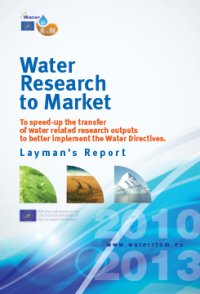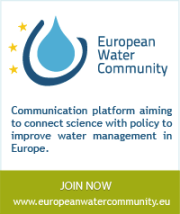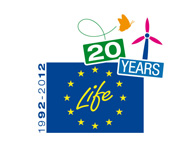SOSTAQUA
| Output characterisation | |
| OUTPUT SENTENCE | Integration of renewable energy sources (photovoltaic) in wastewater treatment. |
| OUTPUT TYPE | prototype |
| WATER TOPIC | Urban pollution |
| KEYWORDS | Wastewater treatment; Problematic, high power consumption. |
| KEYWORDS TYPE | PROTOTYPE- laboratory scale plant for treatment of |
| MARKET NEED TAILORED | Reducing energy consumption in the water treatment plants |
| OUTPUT DESCRIPTION | Photovoltaic solar energy can provide power without primary fuel. The introduction of solar photovoltaic power can be replaced as operating costs (fuel) for investment costs (equipment), without causing environmental damage resulting from the use of renewable energies. Demonstrate the technological feasibility of a self-sustaining process of integrating and Electro-Oxidation assisted solar photovoltaic (ESOF process) for the treatment of wastewater contaminated with organic load and evaluate the environmental sustainability of ESOF process, using solar energy against lattice energy of electro-oxidation process conventionally. |
| STATE OF DEVELOPMENT | Studying the integration of photovoltaic solar energy in a laboratory scale process of electro-oxidation for removing biodegradable organic matter. Demonstrate the technological feasibility of urban sewage treatment plant continuously through a pilot plant scale electro-oxidation of a wastewater treatment plant located in assisted and controlled power. |
| INNOVATIVE ASPECTS AND ADVANTAGES | Integration of renewable energy (photovoltaic) in the process of wastewater treatment. The advantages of the technology of electro-oxidation is the possibility of oxidation of compounds without chemical reagents consumption, generates no sludge or by-products, making easier the operation and control. Photovoltaic solar energy can provide power without a primary fuel, which can replace operating costs (fuel) for investment costs (equipment) without causing environmental damage. |
| INTELLECTUAL/INDUSTRIAL PROPERTY RIGHTS | SOSTAQUA project |
| TRANSFERABILITY | This system can be installed in any urban or rural EDAR where it exists organic load in wastewater. |
| POTENTIAL USERS/CLIENTS | Wastewater treatment plants with organic loading national and international. |
| Estimation of risks | |
| EVALUATION OF RISKS FOR OUTPUT USERS | Knowledge need on the behavior of laboratory scale effluent (technical feasibility). |
| ECONOMICAL RISKS | High cost of energy derived from the operation.; High cost of equipment investment. |
| TECHNICAL RISKS | The independence of mass storage systems energy: in short, the volume / flow to be treated is a function of available sunlight, so always be more effective to treat water storage than the equivalent amount of energy as batteries. |
| MARKET RISKS | Very young technology, expensive investment to be completely autonomous, viable locations with energy problems.Real Decree Law 1/2012 by which proceeds to the suspension of pre-allocation procedures in new production facilities special regime electrici |
| Steps ahead | |
| NEXT STEPS TO ACHIEVE THE STATUS 'READY TO USE' | Currently is available in a Sewage Treatment plant of Aguilar de Campoo (Palencia), where one carries out a experimental a pilot plant, who is currently running. |
| TYPE OF PARTNER FOR THE NEXT DEVELOPMENTS | Currently the project is complete, has been implemented successfully in the EDAR in Aguilar de Campo (Palencia), where operation is going on. |
| TASKS TO BE PERFORMED | Major scientific research and testing in other EDAR at large scales for more specific results and incentivize for governments carried out considerable investments to develop. Were suspended grants to this type of projects installation of renewable energy sources (photovoltaic), causing a break in the market and in research. |
| COLLABORATION DETAILS | Investigations can be financed and developed by academic institutions and government funds, has participated in this case the AGBAR Group,The University of Alcalá de Henares and the University of Cantabria, financed by the Ministry of Science and Technology |
| Estimation of ressources | |
| RESOURCES FOR NEXT STEPS | Real Decree 509/1996, Real Decree 2116/1998 concerning urban waste water treatment, National Water Plan 2007-2015 |
| Contact | |
| TECHNICAL CONTACT | Enric Larrotcha (AGBAR) |
| COUNTRY | SPAIN |
| WEBSITE | http://www.sostaqua.com/publications/publications.php?act=9&task=43 |
| WATER RTOM CONTACT | Amphos21 |
| Background | |
| PROJECT ACRONYM | SOSTAQUA |
| PROJECT DESCRIPTION | Photovoltaic solar energy can provide power without primary fuel. The introduction of solar photovoltaic power can be replaced as operating costs (fuel) for investment costs (equipment), without causing environmental damage resulting from the use of renewable energies. Demonstrate the technological feasibility of a self-sustaining process of integrating and Electro-Oxidation assisted solar photovoltaic (ESOF process) for the treatment of wastewater contaminated with organic load and evaluate the environmental sustainability of ESOF process, using solar energy against lattice energy of electro-oxidation process conventionally. |
| LEADER | Centre de Recerca i Investigació de Catalunya (CRIC)—Centro tecnologic (CTM) |
| TEAMS INVOLVED | CDTI (Centre for Industrial Technological Development) program wit 2010; AGBAR. - University of Alcalá. - University of Cantabria |
| COUNTRIES INVOLVED | SPAIN |
| PROJECT LOCATION | ES |
| FUNDING ORGANISATION | cenit/CDTI |




